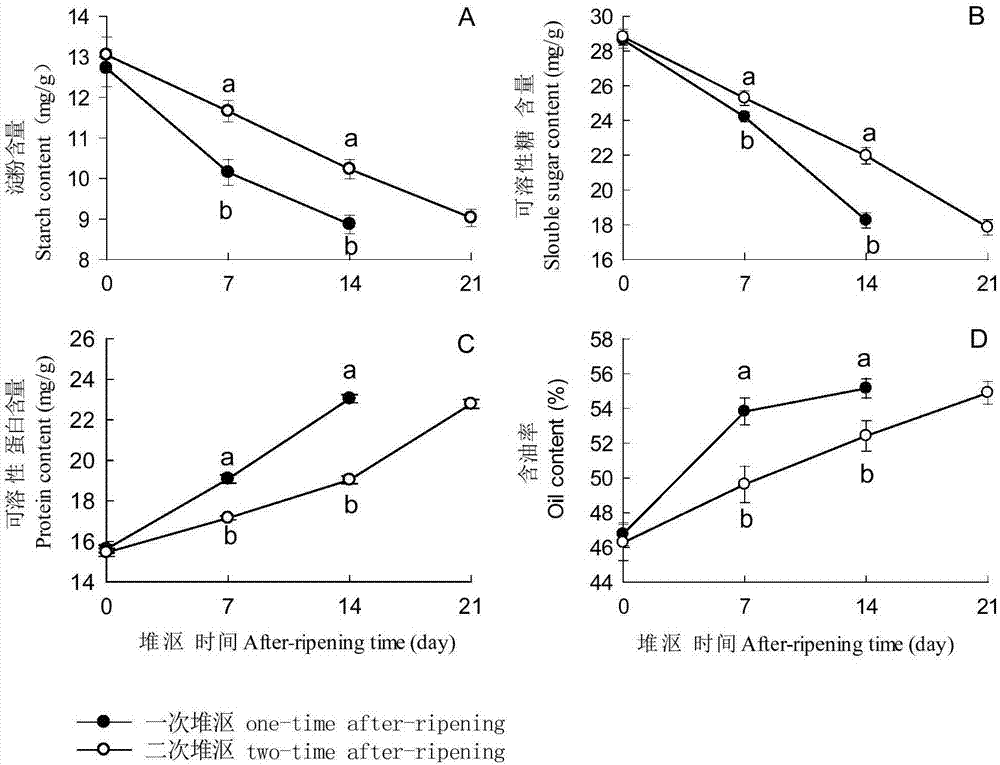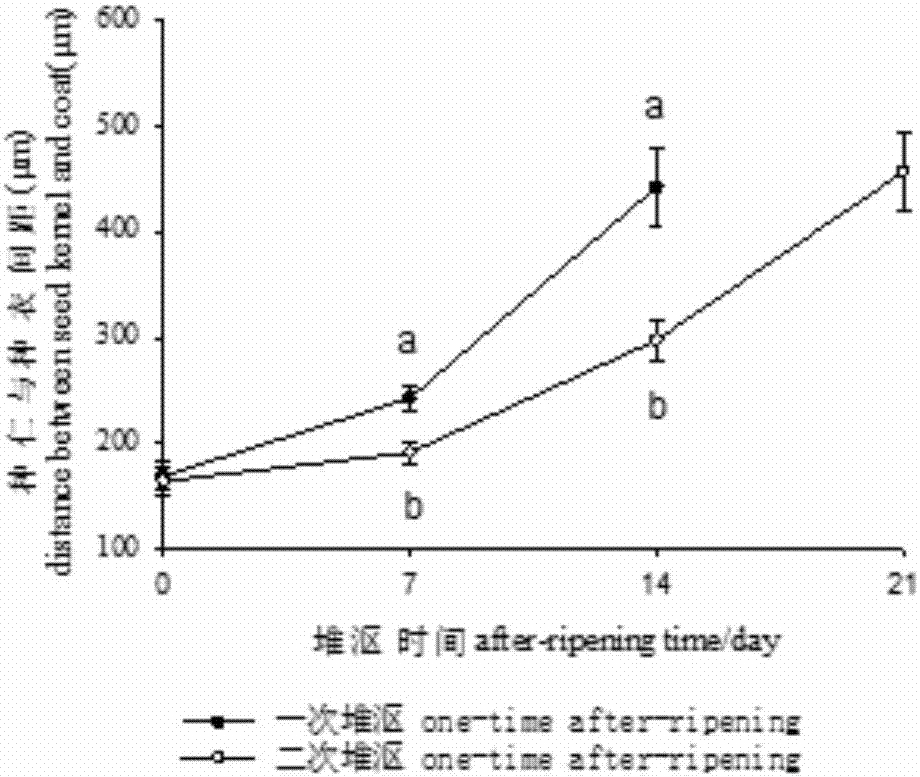Method for stack retting after-ripening of Chinese torreya seeds
A technology of Torreya torreya and seeds, which is applied in the field of storage and processing of edible forest products, can solve the problems of shortening post-ripening time, long technical time, and low operability, and achieve the goal of improving post-ripening quality, nutritional quality, and maturity Effect
- Summary
- Abstract
- Description
- Claims
- Application Information
AI Technical Summary
Problems solved by technology
Method used
Image
Examples
Embodiment 1
[0037] A method for post-ripening Chinese torreya seeds after stacking and retting, carried out according to the following steps:
[0038] (1) Harvesting: Torreya chinensis gradually changes from emerald green to light yellow, longitudinal cracks appear on the surface of Torreya chinensis, and the arils are cracked to expose the seed cores, and the damaged and odorous seeds are removed, and the seeds with the same particle size, well-proportioned, neat and plump are selected. Torreya seeds are used as raw material.
[0039] (2) Remove the arils: remove the arils manually or mechanically from the plucked torreya,
[0040] (3) Stack retting: stack the torreya seeds that have been removed from the arils on the indoor mud floor (there is water on the torreya seeds and need to be dried before stacking), the stacking height is 25cm, and stacked in a cool, ventilated environment around. Shade net, turn it once every 3 days, cover the shade net after turning over, pile up until the s...
Embodiment 2
[0058] A method for post-ripening Chinese torreya seeds after stacking and retting, carried out according to the following steps:
[0059] (1) Harvesting: Torreya is picked when it changes from emerald green to light yellow, longitudinal cracks appear on the surface of Torreya, and the aril cracks to expose the seed core. Remove damaged and odorous seeds, and choose torreya seeds with the same particle size, well-proportioned, neat and plump as raw materials.
[0060] (2) Removing the arils: removing the arils from the picked Torreya chinensis manually or mechanically.
[0061] (3) Stack retting: stack the torreya seeds that have been removed from the arils on the indoor mud floor (there is water on the torreya seeds and need to be dried before stacking), the stacking height is 20cm, and stacked in a cool, ventilated environment around. The shading net is turned once every 5 days, and the shading net is covered after turning. Pile until the seed coat inside the torreya seeds...
Embodiment 3
[0065] A method for post-ripening Chinese torreya seeds after stacking and retting, carried out according to the following steps:
[0066] (1) Harvesting: Torreya is picked when it changes from emerald green to light yellow, longitudinal cracks appear on the surface of Torreya, and the aril cracks to expose the seed core. Remove damaged and odorous seeds, and choose torreya seeds with the same particle size, well-proportioned, neat and plump as raw materials.
[0067] (2) Removing the arils: removing the arils from the picked Torreya chinensis manually or mechanically.
[0068] (3) Stack retting: stack the torreya seeds that have been removed from the arils on the indoor mud floor (there is water on the torreya seeds and need to be dried before stacking), the stacking height is 30cm, and stacked in a cool, ventilated environment around. The shading net is turned once every 5 days, and the shading net is covered after turning. Pile until the seed coat inside the torreya seeds...
PUM
 Login to View More
Login to View More Abstract
Description
Claims
Application Information
 Login to View More
Login to View More - R&D
- Intellectual Property
- Life Sciences
- Materials
- Tech Scout
- Unparalleled Data Quality
- Higher Quality Content
- 60% Fewer Hallucinations
Browse by: Latest US Patents, China's latest patents, Technical Efficacy Thesaurus, Application Domain, Technology Topic, Popular Technical Reports.
© 2025 PatSnap. All rights reserved.Legal|Privacy policy|Modern Slavery Act Transparency Statement|Sitemap|About US| Contact US: help@patsnap.com



